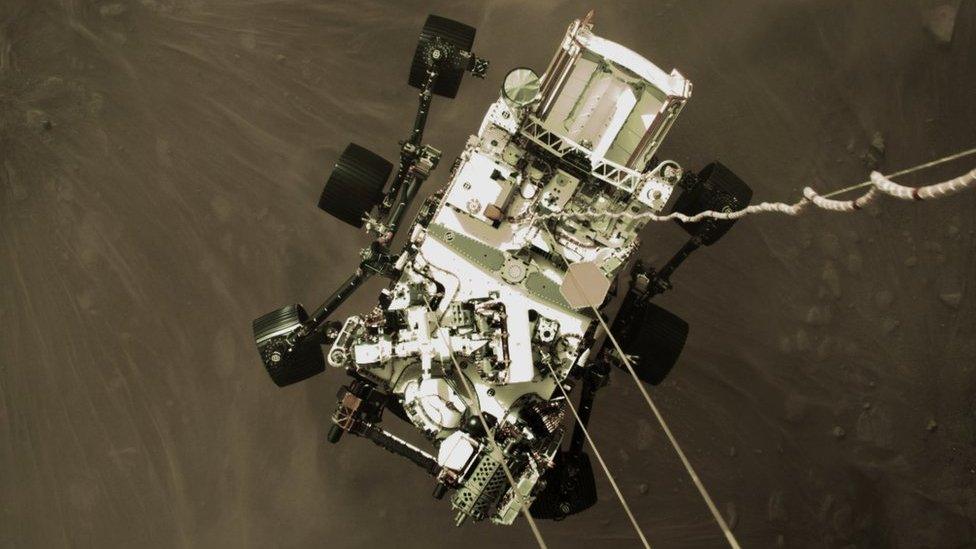Mars crater: Huge rock crashes onto surface of Red Planet
- Published
- comments
WATCH: Fly over the crater in this 3D representation
Space probes have caught the moment a gigantic crater was formed on Mars.
A meteor the size of a VAN crash landed onto the surface of the Red Planet on Christmas Eve last year, and carved out a huge 150m-wide hole.
That's about one-and-a-half times the size of London's Leicester Square!
The event was discovered when vibrations the rock made when it collided with the surface of Mars were picked up by what's called a seismometer - a special tool that measures how much the ground moves.
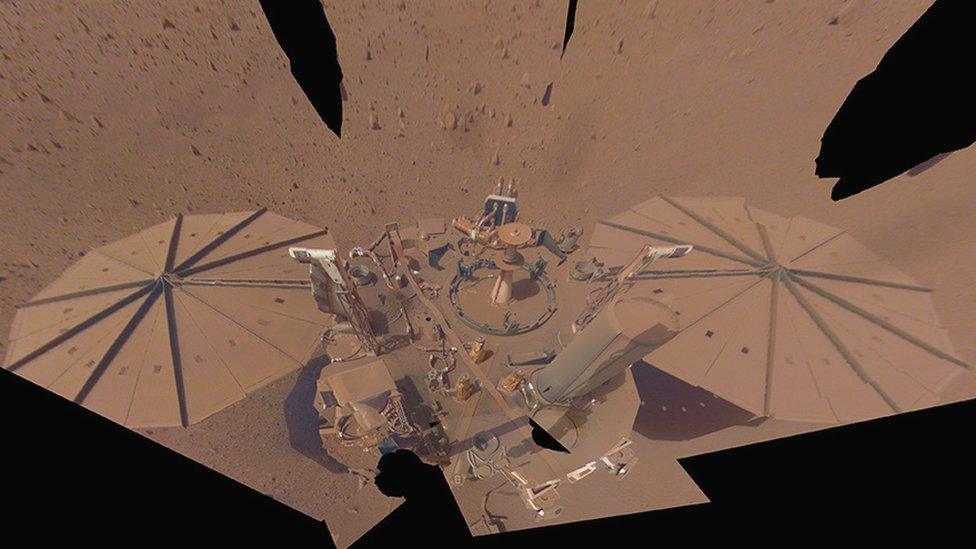
This is the InSight lander, which has the probe that picked up the crater formation
The probe was on board the US Space Agency's InSight Mars lander, which is on the Red Planet to record Marsquakes - get it?
Pictures then confirmed the astonishing discovery - one of Nasa's satellites called the Mars Reconnaissance Orbiter (MRO) picked up images of the crater before, and after, it had been made.
The images were then sent back to base for experts to study.
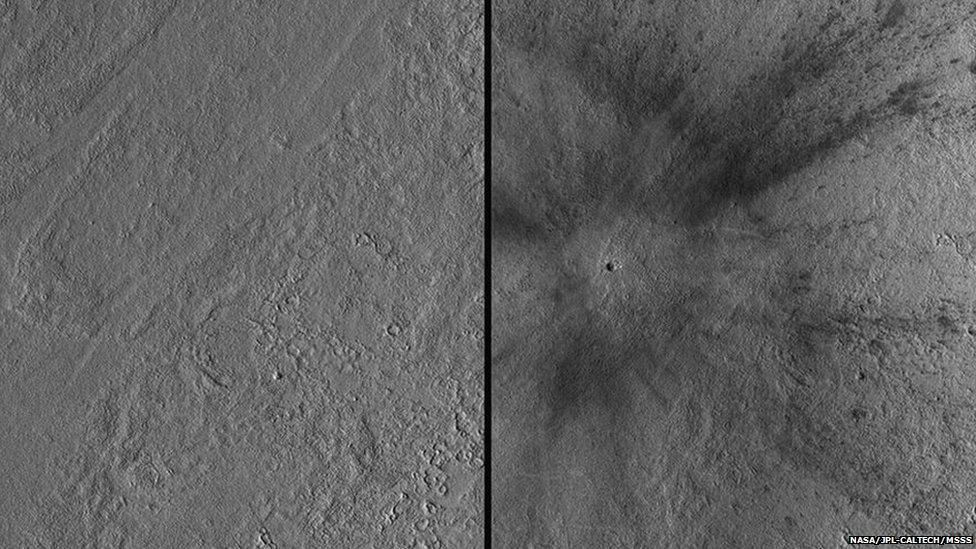
Check out these before and after shots of the meteorite strike
Dr Ingrid Daubar from Brown University in America said: "This is the biggest new crater we've ever seen... [it] is more than 10 times larger than the typical new craters we see forming on Mars.
"We thought a crater this size might form somewhere on the planet once every few decades, maybe once a generation, so it was very exciting to be able to witness this event," she continued.
Water find!
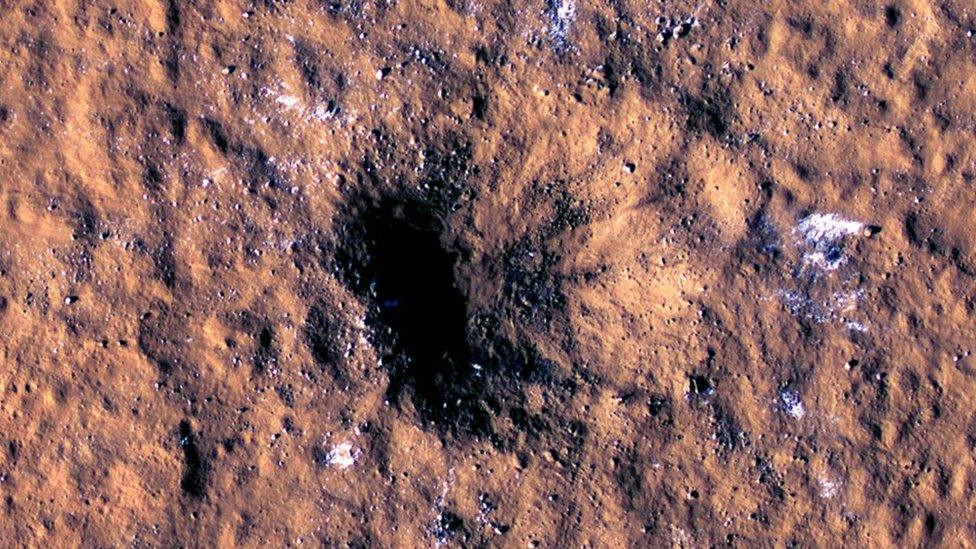
This picture shows you just how big the hole in Mars' surface is!
Now, while you may think that people would want to avoid somewhere were rocks come hurtling at you, it's actually led to an exciting discovery that scientists say will be important for future human missions to the area.
The blast unearthed loads of ice beneath the surface of the planet. It's the first time frozen water has been found so close to the planet's equator (an imaginary line around planets that splits the North from the South).
"That ice can be converted into water, oxygen or hydrogen. That could be really useful," said Dr Lori Glaze, Nasa's director of planetary science.
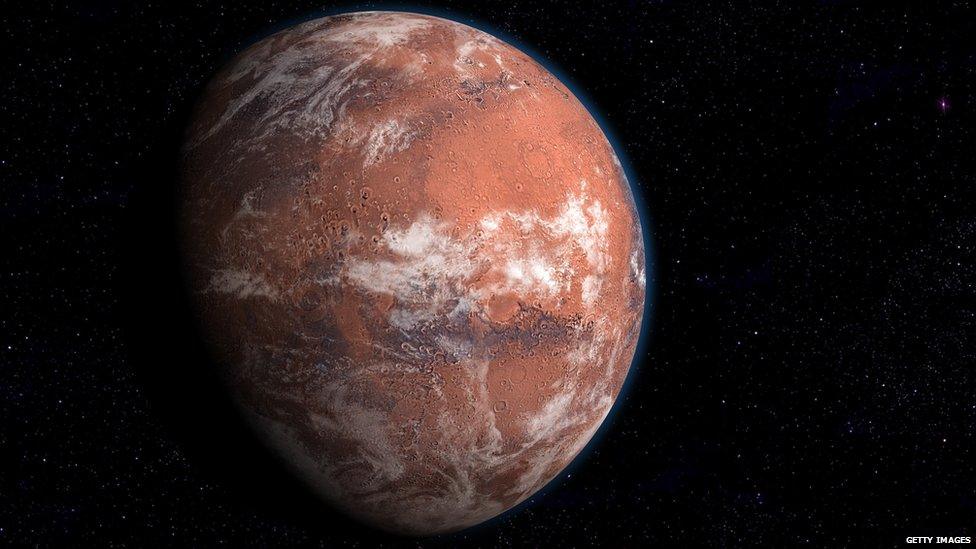
Mars has loads of ice beneath the surface, but this is the first time any has been discovered in this particular area
This discovery has led scientists to notice another earlier meteorite strike on 18 September, 2021.
It was slightly smaller, and produced a group of craters, the largest being 130m wide.
Scientists think both of these events can shed light what Mars is made of.
It might also lead to new information on why the Northern hemisphere of the planet is so flat, and why the Southern hemisphere has so many mountains.
- Published13 February 2023
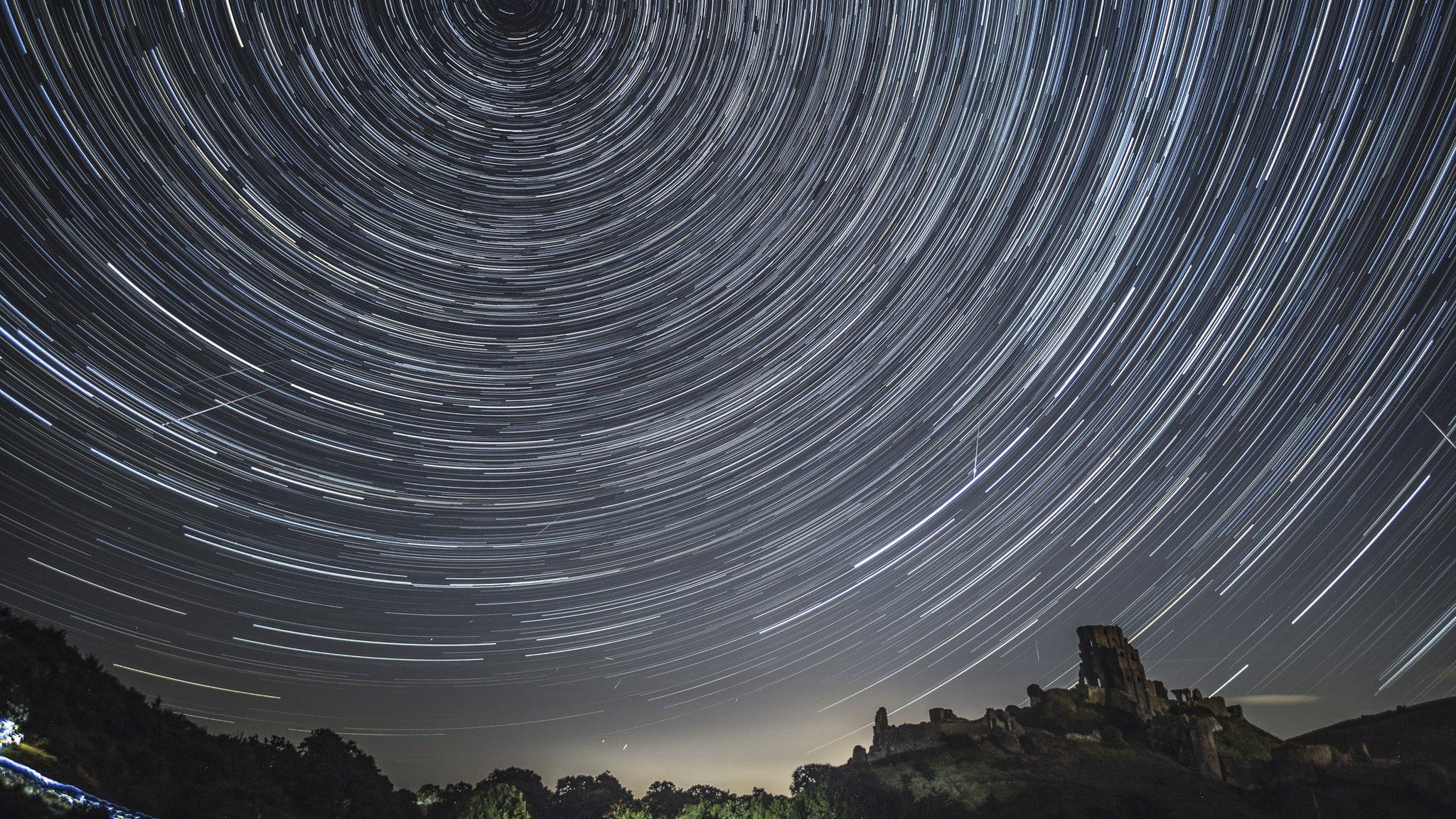
- Published19 February 2021

- Published20 February 2021
